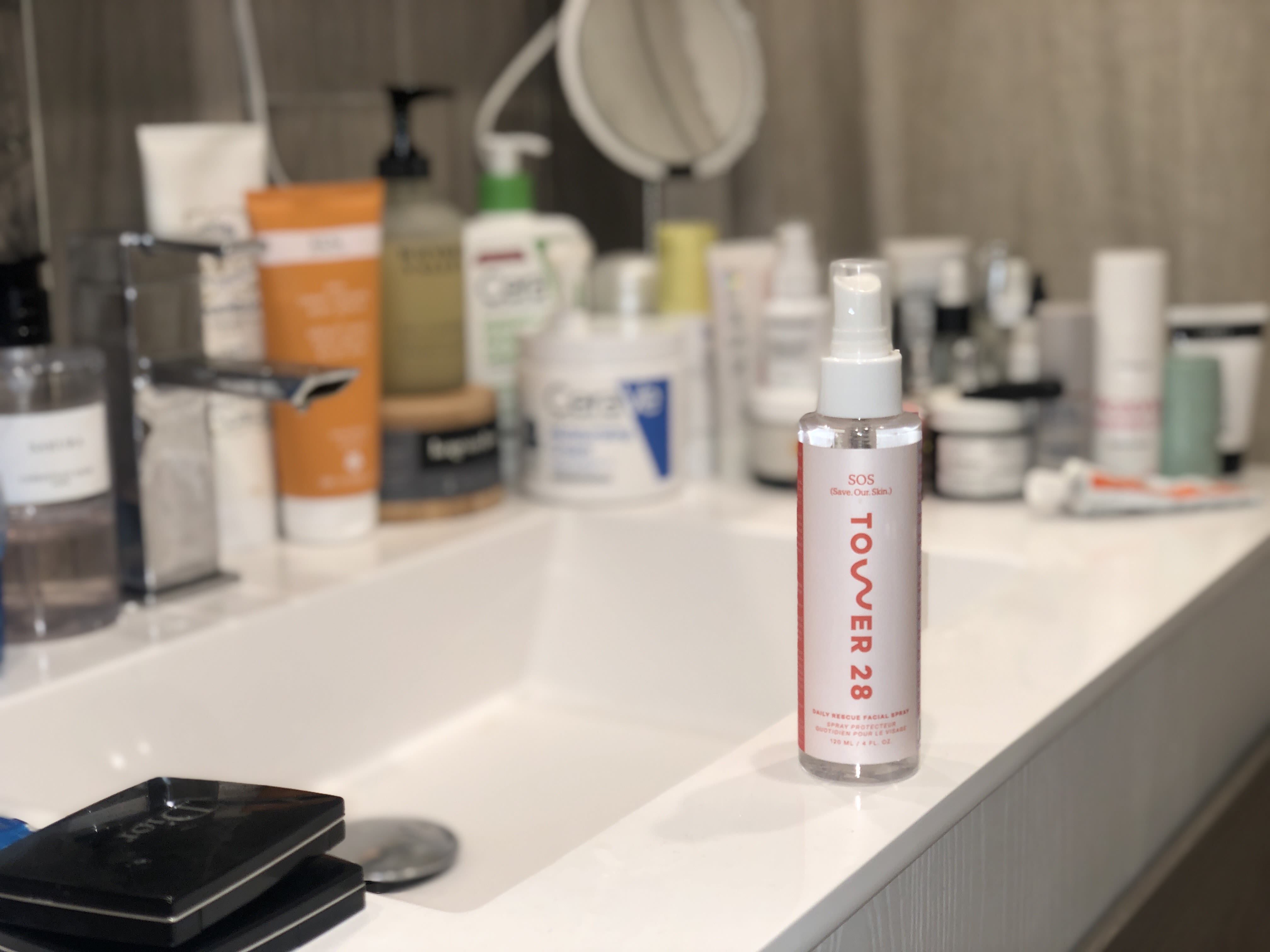I don’t remember the exact day I met Tower 28 founder Amy Liu—I do remember thinking she looked distinctly LA (is it, generally, in the loose waves?), and that I was in the middle of a series of Fraxel treatments. It had been a frustrating couple of months from a beauty perspective: the revolving door of products that is my routine abruptly halted, leaving me wedged between a tub of CeraVe and… a pump bottle of CeraVe. I wasn’t about to introduce something new that might cause a reaction. But the beauty itch don’t stop just because I can’t scratch it, so I pivoted. Mainly to sunblocks, lip conditioners, and piercings. Reader, I got four new piercings in a two week period! Apparently, that’s what happens when I can’t rotate my serums? I mention all of this just to say, I was not expecting Amy to sell me on a new skincare product that day. I just wasn’t interested. Believe you me.
I jumped right into Tower 28’s makeup while the brand’s one skincare product, SOS, sat in my bathroom unused. It was a facial spray, it smelled like a swimming pool, and I hadn’t had any experience with its main ingredient before. But I remembered that smell when, a few days later, the PA at Union Square Dermatology prepping my face for Fraxel swiped on a solution that smelled surprisingly similar. “We just like everything to be really clean,” she explained to me, placing the bottle back on the counter. When she slipped out of the room I checked its label—it had the same active as the SOS spray.
So here’s what’s really up: while the brand maintains SOS stands for "Save Our Skin," it also stands for "super oxidized solution." An SOS is a slightly acidic mix of water, salt, and an ingredient called hypochlorous acid. Not to be confused with hydrochloric acid, which is the corrosive chemical used to make batteries, hypochlorous acid is found naturally in your body. In fact, it’s an important part of your immune response—when your body clocks something it thinks might cause an infection, it triggers a series of responses that end with the release of hypochlorous acid. It’s not an antibiotic, so it’s available OTC and you won’t develop resistance to it, but it does kill bacteria. (In fact, it’s the one thing Amy told me helped her get off of an antibiotic prescription.) It has similar bacteria-killing abilities as hydrogen peroxide, which works great as a disinfectant but causes cell death and a slower healing process when used on skin. And, get this! Because hypochlorous acid comes from your body, it doesn’t attack the good bacteria that also comes from your body. Though its use in skincare sounds cutting edge, lots of studies already exist to back up that hypochlorous acid works. This one recorded the time it took for hypochlorous acid to kill all microorganisms as 12 seconds. 12 seconds! If you’re trying to keep a wound clean, or struggle with acne, 12 seconds is significant. And at the time, I was doing both.
After my second Fraxel treatment, I started using SOS right after my morning and night face washes. Somewhat miraculously, my red, flaky face really did heal faster than the time before. And, per Amy’s suggestion, I also started spraying it on a fresh daith piercing that was acting up. The difference was visible: my swollen, red piercing became flatter and less crusty with each passing day. I’ve become totally reliant on it to keep my piercings calm and my skin under control while I can’t use anything else—so much so that I’ve actually gotten replacement bottles, which I never do.
So, here’s my suggestion. If you have a new hole in your face, get this spray. If you have acne, get this spray. If you’re healing from surgery or a laser treatment, get this spray. Spray it on blisters, on the finger you cut while grating parmesan. Spray it everywhere! If it can’t hurt your skin at its most sensitive, it literally can’t hurt.
—Ali Oshinsky
Photo via the author

